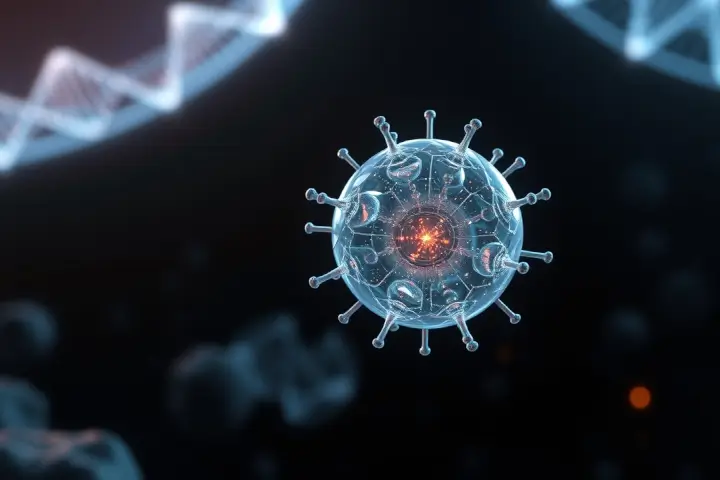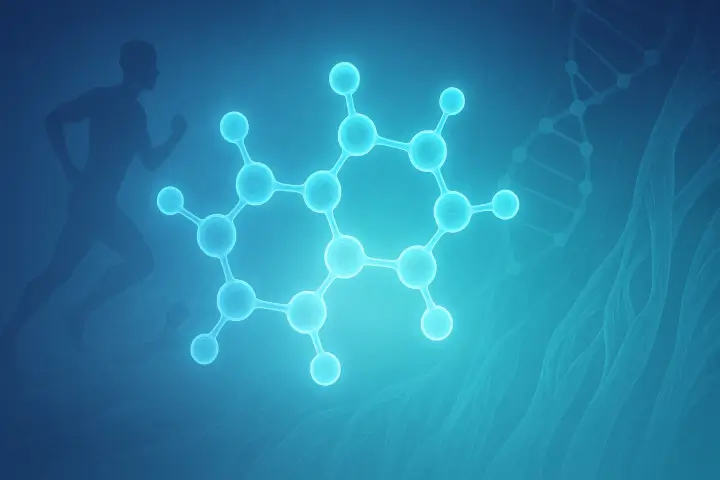In the ever-evolving field of peptide research, CJC-1295 has emerged as a potent growth hormone–releasing hormone (GHRH) analog that’s capturing the attention of scientists, fitness professionals, and wellness enthusiasts alike. Offering a sleek way to stimulate endogenous growth hormone secretion, CJC-1295 may support muscle growth, fat reduction, and enhanced recovery. But what exactly is happening behind the scenes, and how does it translate into tangible health benefits? This deep dive unveils the mechanism of action, the variants such as CJC-1295 DAC and combinations like CJC-1295 Ipamorelin, as well as potential safety considerations and community insights.
Despite the technical jargon, the aim here is to distill complex endocrinology into accessible terms, so that even readers without a scientific background can grasp the significance of CJC-1295. Along the way, the article will address commonly searched queries—ranging from CJC-1295 price fluctuations to cjc-1295 side effects—and round out with a concise FAQ section designed to land in that coveted featured snippet. Let’s step up a gear and explore the powerhouse that is CJC-1295.
Understanding CJC-1295: Mechanism and Variants
At its core, CJC-1295 functions as a synthetic analog of endogenous growth hormone–releasing hormone. By binding to specific receptors in the pituitary gland, it prompts a pulsatile release of growth hormone, which in turn triggers downstream effects on metabolism, tissue repair, and more. Unlike traditional GH injections, CJC-1295 works at the regulatory level, coaxing the body’s own machinery to release hormone surges in a more physiological pattern.
Two primary variants have gained traction: the standard form and the long-acting version known as CJC-1295 DAC. The DAC, or Drug Affinity Complex, extends the half-life by binding to serum albumin, ensuring sustained receptor engagement and fewer administrations over time. Another popular approach pairs CJC-1295 with Ipamorelin, producing a synergistic effect where Ipamorelin enhances the amplitude of growth hormone peaks without amplifying undesired hormones like cortisol or prolactin.
| Feature | CJC-1295 (Standard) | CJC-1295 DAC | CJC-1295 Ipamorelin |
|---|---|---|---|
| Half-Life | ~30 minutes | ~6–8 days | ~30 minutes (with Ipamorelin synergy) |
| Administration Frequency | Multiple times/day | 1–2 times/week | Multiple times/day |
| GH Release Pattern | Pulsatile | Sustained pulses | Amplified pulsatile |
| Typical Goal | Short-term spikes | Long-term stability | Maximized peaks |
Health Benefits of CJC-1295
Enhanced Growth Hormone Release
Growth hormone plays a pivotal role in cellular regeneration, protein synthesis, and overall anabolic signaling. By nudging the pituitary to release more GH, CJC-1295 may foster an environment conducive to muscle fiber repair and growth. This is particularly valuable after intense physical training, when the body’s demand for recovery is at its highest. Furthermore, the regulated, physiological release pattern helps mimic natural secretion rhythms, potentially reducing the abrupt spikes and crashes observed with exogenous GH injections.
In studies published in reputable endocrinology journals, subjects receiving GHRH analogs showed significant increases in serum growth hormone levels without corresponding elevations in adverse byproducts. While direct comparisons to GH therapy are ongoing, early data suggest that the precision of CJC-1295’s mechanism yields a more balanced hormonal milieu.
Improved Recovery and Tissue Repair
Beyond muscle hypertrophy, growth hormone has well-documented effects on collagen synthesis, wound healing, and overall tissue integrity. Individuals recovering from orthopedic injuries or surgical procedures may experience accelerated repair pathways when endogenous GH levels are optimized. This is especially true when CJC-1295 is paired with lifestyle factors—adequate sleep, balanced nutrition, and controlled stress—which all synergize to amplify natural healing.
Laboratory models indicate that enhanced GH release can upregulate key growth factors like IGF-1 (Insulin-like Growth Factor 1), which orchestrates cell proliferation and differentiation. In a nutshell, CJC-1295 helps set the stage for quicker bounce-back from physical strain or trauma.
Fat Loss and Metabolic Effects
Growth hormone exerts lipolytic activity, meaning it encourages the breakdown of stored fat into free fatty acids. When GH pulses occur more frequently, the metabolic machinery ramps up fat oxidation, potentially supporting lean body composition. Moreover, GH regulates glucose homeostasis and the balance between carbohydrate and lipid utilization, leading to a multifaceted metabolic boost.
Clinical observations reveal that participants with enhanced GH secretion often display favorable changes in body fat percentage, waist circumference, and lipid profiles. This isn’t a magic bullet, of course—diet and exercise remain critical—but CJC 1295 benefits the metabolic toolkit by tilting the energy equation in favor of fat loss.
Better Sleep and Cognitive Well-Being
Quality sleep is a cornerstone of health, and growth hormone is primarily released during slow-wave (deep) sleep stages. By supporting more robust GH pulses, CJC-1295 can improve sleep architecture, leading to deeper rest and enhanced daytime performance. Anecdotal reports often highlight more vivid dreams, fewer nighttime awakenings, and a general sense of rejuvenation upon waking.
On the cognitive side, growth hormone and IGF-1 have neuroprotective properties, fostering neuronal growth, synaptic plasticity, and stress resilience. While large-scale trials are still in progress, preliminary findings hint at improved mood, sharper focus, and reduced mental fatigue in individuals with optimized GH levels.
Safety Profile and Potential Concerns
No bioactive compound is entirely free of risk, and CJC-1295 is no exception. The most commonly reported cjc-1295 side effects include mild injection site discomfort, transient flushing, and occasional headaches. On the flip side, more serious adverse events such as joint pain or insulin resistance are rare, especially when protocols adhere to safety guidelines and medical oversight.
Long-term safety data are still accumulating. Researchers emphasize the importance of periodic monitoring—blood panels, hormone levels, and metabolic markers—to catch any emerging imbalances early. Ultimately, a risk-benefit analysis should be undertaken in consultation with healthcare professionals familiar with peptide therapeutics.
Price and Availability
Investigating CJC-1295 price reveals a variable landscape influenced by purity, vendor reputation, and geographic region. High-quality pharmaceutical-grade peptides often command a premium due to stringent manufacturing standards and third-party verification. Conversely, lower-cost options may carry quality uncertainties, underscoring the age-old adage: you get what you pay for.
- Bulk research-grade suppliers tend to offer volume discounts.
- Smaller, boutique labs may charge more but provide detailed batch analysis.
- Regulatory status varies, so local legal guidelines should be reviewed before purchase.
As with any specialized compound, storage conditions (e.g., refrigeration) and expiration dates can also sway the effective cost per milligram.
Forms and Administration Considerations
CJC-1295 is traditionally administered via subcutaneous injection, which offers reliable bioavailability. However, interest in CJC-1295 oral formats has risen, with anecdotal reports suggesting partial activity via mucosal absorption. At present, the injectable route remains the gold standard for predictable pharmacokinetics, while oral preparations are generally considered experimental and may suffer from inconsistent potency.
Although specific cjc-1295 dosage recommendations are beyond the scope of this overview, it’s worth noting that administration parameters—frequency, timing relative to exercise and sleep—can profoundly affect outcomes. Consulting with qualified specialists ensures that any protocol aligns with individual health status and goals.
Community Insights and Online Discussions
Online forums like CJC 1295 Reddit threads are buzzing with user experiences—some rave about accelerated muscle gains and deeper sleep, while others mention mild swelling or injection-site reactions. While these anecdotal accounts shouldn’t replace scientific evidence, they can shed light on real-world patterns and creative strategies, such as stacking with other peptides or adjusting administration timing for optimal results.
Overall, community feedback tends to underscore the importance of sourcing, purity and professional guidance. Users frequently remind newcomers to verify certificates of analysis, rotate injection sites, and maintain realistic expectations.
Conclusion
CJC-1295 stands at the forefront of peptide-based growth hormone modulation, bridging cutting-edge research and practical applications. Whether seeking enhanced recovery, improved body composition, or better sleep quality, its mechanism of action offers a compelling alternative to conventional GH therapy. That said, safety monitoring, supplier credibility, and individualized planning remain non-negotiable elements of any responsible approach.
By staying informed—examining the science, understanding cjc-1295 side effects, and drawing on community insights—potential users can unlock the full potential of this versatile peptide while keeping an eye on overall health and well-being.
FAQs
What does CJC-1295 do?
CJC-1295 is a synthetic GHRH analog that stimulates the pituitary gland to release growth hormone in a pulsatile manner, promoting muscle growth, improved recovery, fat metabolism, and enhanced sleep.
Does CJC-1295 lower testosterone?
CJC-1295 primarily targets the growth hormone axis and does not directly suppress testosterone. Normal testosterone levels are generally maintained, though individual hormone panels should be monitored for any unexpected shifts.
Is CJC-1295 safe to take?
When sourced from reputable suppliers and used under medical supervision, CJC-1295 is considered relatively safe. Common side effects are mild—such as injection-site discomfort—but periodic blood work is advised to track any metabolic or hormonal changes.
What are the side effects of CJC-1295?
Typical cjc-1295 side effects include minor redness or itching at injection sites, headaches, and occasional flushing. More serious effects are rare but can include insulin resistance or joint stiffness if not properly managed.


